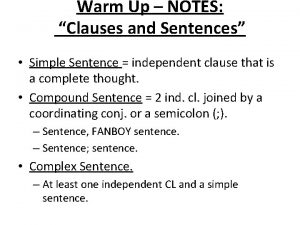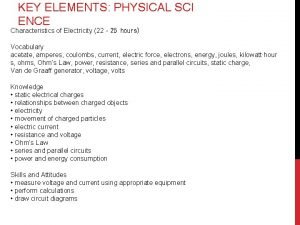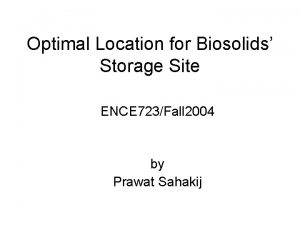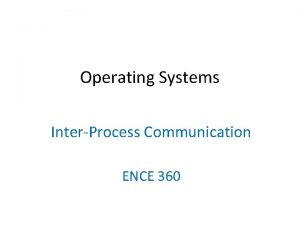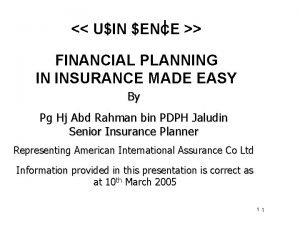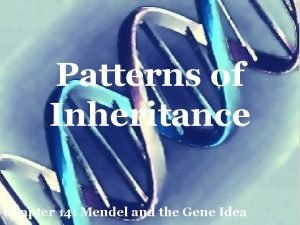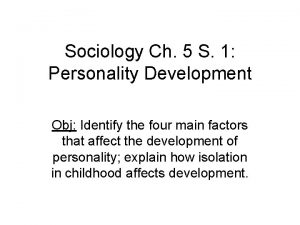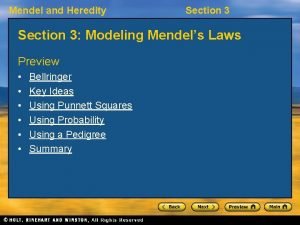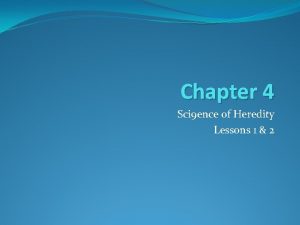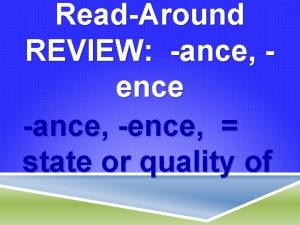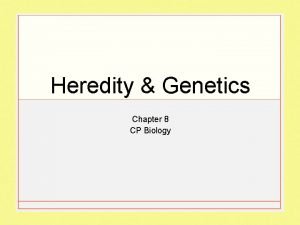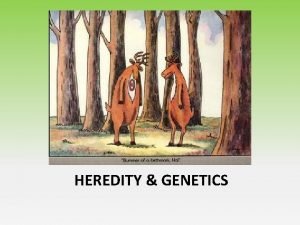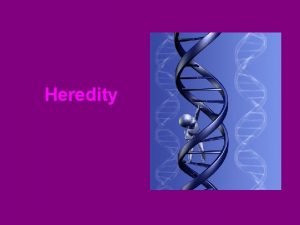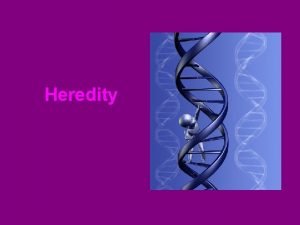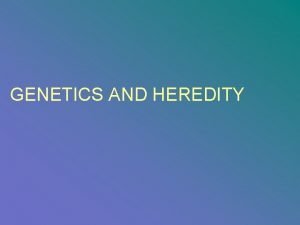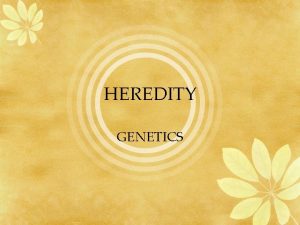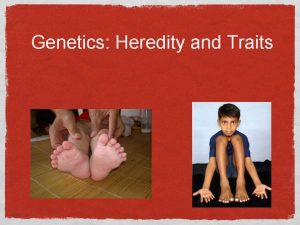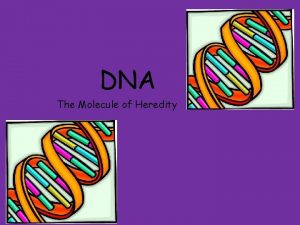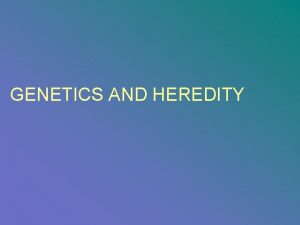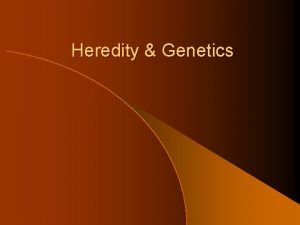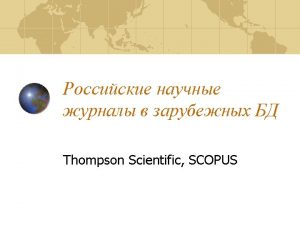Chapter 4 Sci 9 ence of Heredity Lessons















- Slides: 15

Chapter 4 Sci 9 ence of Heredity Lessons 1 & 2

Lessons 1&2 - Genetics Heredity Passing of traits from parent to offspring Alleles Different forms of a trait that a gene may have Ex. Having dimples or not having dimples? Genetics- study of heredity. The study of how traits are inherited through the interactions of alleles

What are Phenotypes and Genotypes? Phenotype: PHYSICAL appearance, or visible traits Genotype: Organism’s GENETIC makeup, or alleles. Homozygous: Two Identical alleles for a trait. Heterozygous: Two Different alleles for a trait.

Mendel- The Father of Genetics Australian Monk Conducted genetic experiments using the garden pea. 1 st person to trace one trait through several generations.

Mendel crossed 2 plants with different expressions of the trait and found that the new plants all looked like one of the two parents. Hybrids They received different genetic information (alleles) for a trait from each parent. Dominant Factors that dominate, or covered up. In peas – Tall Dominated over Short Ex. Tt (heterozygous for tallness) Recessive Factors that seem to disappear In peas- the short formed disappeared

Which Alleles are dominant? Which alleles are recessive?

Punnett Square Shows you all the ways in which alleles can combined. Handy tool used to predict results. A lower case letter = recessive allele. An upper case letter = dominant allele.

The letters form a code!!! Genotype Genetic makeup, of an organism Ex. BB Phenotype The way an organism looks and behaves Physical appearance of an organism Ex. Brown hair

Most cells in your body have two alleles for every trait. Located on chromosomes. Homozygous An organism with two alleles that are the same Ex. Homozygous dominant (TT) or Homozygous recessive (tt) Heterozygous An organism that has two different alleles for a trait. Ex. (Tt) or (Rr)

Let’s Make a Punnett Square Punnet Square- a genetic tool that uses letters to represent dominant and recessive alleles. letters representing two alleles from one parent are written along the top. * Letters representing two alleles from the other parent are placed down the side. Each square of the grid is filled in with one allele donated by each parent. Letters= possible genotypes Probability- helps determine the chance that something will occur.


Male: top (Ff) (F) dominant for freckles Female: side (Ff) (f) not having freckles F f 1 2 3 4 F f

Male: top (Ff) (F) dominant for freckles Female: side (Ff) (f) not having freckles F 1 2 FF F 3 Ff 4 Ff f f ff

Child in Box 1 = homozygous for freckles Phenotypic Ratio: 3: 1 Which box represents a child who does not have freckles: Box 4 - ff Box 3 represents: Ff- heterozygous for freckles

Using Pedigrees Pedigree Tool for tracing a trait through generations of a family. Important for breeding animals or plants When geneticists understand how a trait is inherited, they can predict the probability that a baby will be born with a specific trait.
 Sentences for class 2
Sentences for class 2 Sent interrupter ence
Sent interrupter ence Sent interrupter ence example
Sent interrupter ence example Electric potential
Electric potential Ence storage
Ence storage Ence pipes
Ence pipes Easy for ence
Easy for ence Chapter 11 human heredity section 11-3
Chapter 11 human heredity section 11-3 Chapter 11 complex inheritance and human heredity test
Chapter 11 complex inheritance and human heredity test Chapter 14 human heredity
Chapter 14 human heredity Chapter 14 patterns of heredity
Chapter 14 patterns of heredity Chapter 17 lesson 2 heredity and genetics
Chapter 17 lesson 2 heredity and genetics Genetic vocabulary worksheet answer key
Genetic vocabulary worksheet answer key An unchanging, biologically inherited behavior pattern.
An unchanging, biologically inherited behavior pattern. Mendelian genetics concept map
Mendelian genetics concept map Section 3 mendel and heredity
Section 3 mendel and heredity

